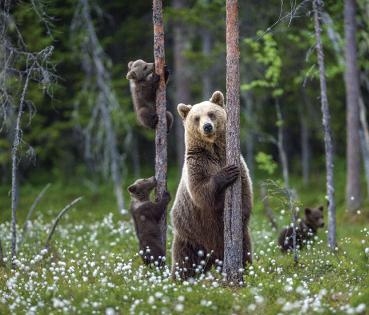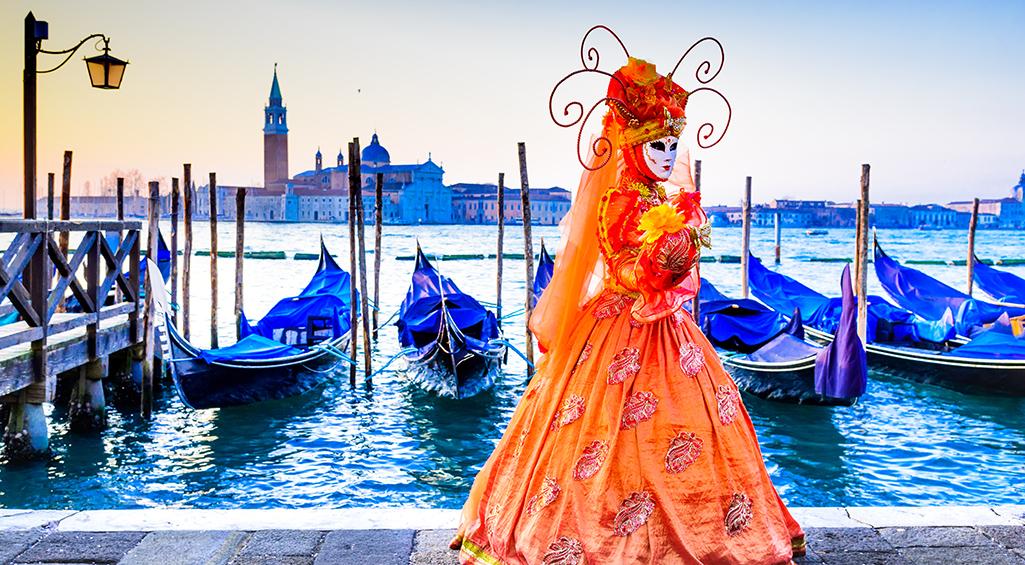
Around the world in 7 carnivals
From the exuberantly sensual display of Rio de Janeiro to the giant lemon sculptures in Menton, we invite you to discover how this festival is experienced at other latitudes.
Carnem levare −say goodbye to meat before entering the Lenten period of abstinence in the Catholic tradition–, is the Latin term from which the word Carnival originates. Its origin however is estimated to go back much further, dating back to the festivals carried out honouring the bull Apis in Ancient Egypt. Lust, overflowing joyfulness and all kinds of excesses characterised these celebrations, which were also reproduced in the ones devoted to the gods Bacchus and Saturn in the Roman Empire.
Permissiveness and “misrule”
Little by little, the custom of annually celebrating this festival spread throughout Europe, and since the Middle Ages, it also became a period of permissiveness and “misrule” in which, for a few days, scathing criticism of the authorities and religious moral were allowed. Subsequently, Spanish and Portuguese sailors reached America, where over time some of the most spectacular carnivals that can be seen today were developed. To experience a great carnival first hand, you don’t need to go very far, because Spain has several that play in the first division. Amongst the most popular are the Tenerife carnival, where feathers and glitter are the stars of the processions of floats, along with the choosing of the Queen of the Carnival; or the one in Cadiz, where the famous ‘chirigotas’ compete in wit to ironically dissect current affairs in song. In Las Palmas, the eye-catching Drag Queen Gala stands out, one of the first in the world dedicated to a group that also plays a leading role in Sitges, where under the slogan Per Carnaval tot s’hi val (At Carnival time, everything goes) one of the most groundbreaking carnivals takes place.
However, in this article we propose travelling further away to discover how this festival is experienced in other places. Glamorous ones such as the Venice carnival, exuberant and monumental festivals such as the one in Rio, curiosities such as the one in Menton or ancient celebrations such as the ones in Guinea-Bissau: there are carnivals for all tastes. Accompany us around the world, discovering some of the most attractive ones.
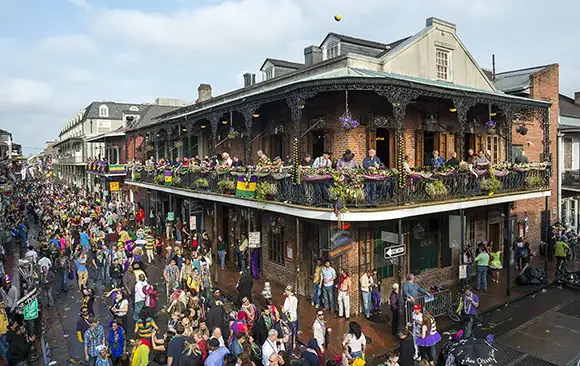
The Mardi Gras: colour, mystery and craziness
1 of 7
The martedi grasso (‘fat Tuesday’), referring to the last banquet celebrated before the period of fasting and abstinence, gives its name to the mythical Mardi Gras of New Orleans. A parade of floats where the mysterious imagination of Louisiana plays a leading role and where the troupes (krewes) throw out tonnes of necklaces with plastic beads and take to the streets of the city. The famous, picturesque French Quarter does not form part of the route, as its streets are too narrow, but the area overflows with music, masks and an unforgettable atmosphere during these days.
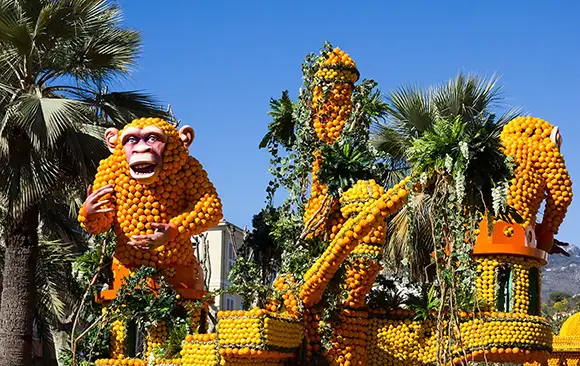
Citrus fruits turned into art in Menton
2 of 7
One hundred years ago, the French town of Menton was the main lemon producer on the European continent. To attract and entertain tourists in the winter, an hotelier had the great idea of organising an exhibition of citrus fruits and flowers that was the beginning of what today has become one of the most curious carnivals in Europe. The peculiarity that makes it unique is the amazing collection of floats and sculptures covered in citrus fruits, mainly lemons and oranges, which invade the Bioves gardens, turning them into a spellbinding world of yellows and oranges. At the end of the festival, which has a different topic every year, the fruit is sold off at low prices.
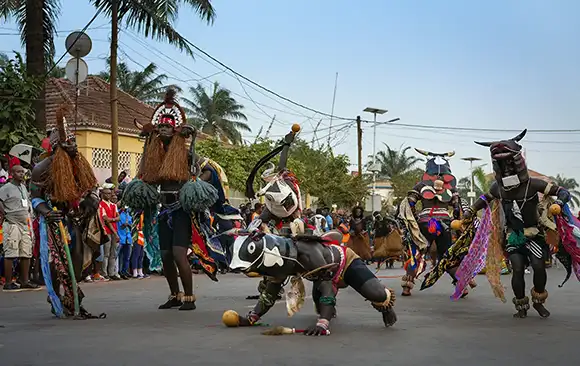
Mysticism and ancient tradition in Guinea-Bissau
3 of 7
Dressed with costumes and masks that pay tribute to their sacred animals, such as the hippopotamus, the hammerhead shark or the bull, the participants of the carnival on the Bissagos Islands dance to the rhythm of drums and bamboo instruments; elaborate dances that have remained unaltered during centuries. The festival is held on many of the eighty-eight islets that make up the archipelago, but it is particularly spectacular in the capital, Bissau, where the ethnic majorities compete with parades that allow the authenticity and mysticism of the ancient traditions to be enjoyed.

Afro-Caribbean rhythm in Notting Hill
4 of 7
British reserve turns into Caribbean abandon every year in London when the weekend of the Notting Hill Carnival arrives which, unlike all the other carnivals around the world, takes place in August. The massive celebration fills this London district with boisterous parades, dances and cultural diversity over two days, the first more devoted to families and the second, a much wilder celebration. Over a million Britons and tourists visit this event every year, which the British Afro-Caribbean community has been organising since the 1960s to vindicate their rich cultural heritage.
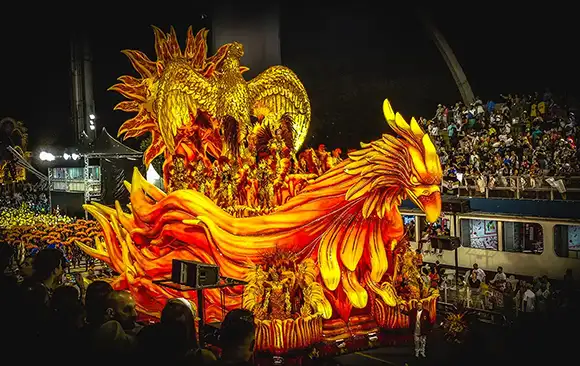
Rio, ‘o rei’ of the carnivals
5 of 7
All the figures evoked by the most famous Carnival in the world are overwhelming: 5 million visitors; up to 5,000 dancers from each large samba school and no less than 77 million condoms, which the authorities have given out in recent editions to tackle the craziness of the celebration. Without any doubt, the most outstanding event of the festival is the parade around the Carioca Sambodrome that takes place over five evenings. Every night six samba schools perform in performances that last just over an hour and offer what could be considered the greatest show in the world.
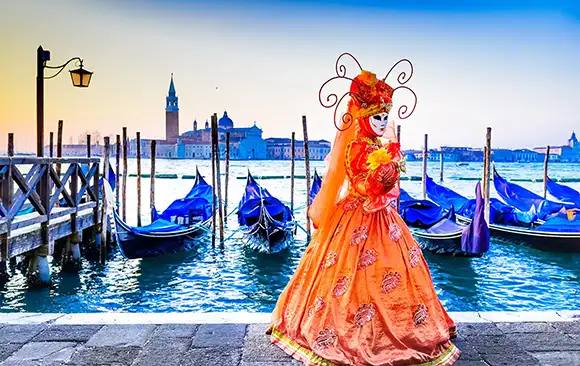
The Serenissima gets all dressed up
6 of 7
What in other places is a burst of sensuality, in Venice is elegance, mystery and glamour. It is one of the oldest carnivals on the planet and, along with Rio, the most mythical in common fantasy. And the fact is that there is no city that can compete as a stage with the Serenissima, where the participants parade through its squares, alleyways and canals. They do this dressed in outfits inspired by aristocratic garments from the 17th century, many of them very elaborately made and with the beautiful masks that have become a symbol of the city.
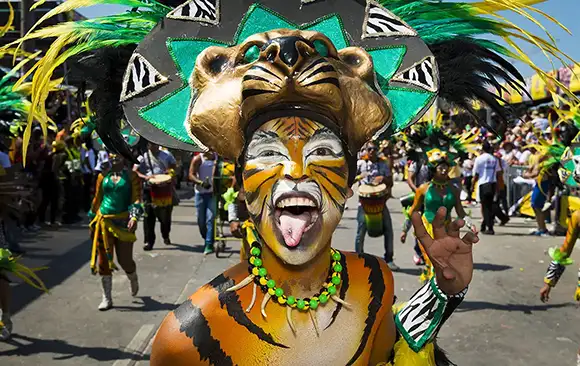
All the wild magic of the Colombian Caribbean
7 of 7
Two decades have passed since the UNESCO proclaimed the Barranquilla Carnival as oral and intangible World Heritage, acknowledging its role as a promoter of the cultural wealth of the Colombian Caribbean. The celebration, which brings together over two million participants every year, moves to the rhythm of ‘merecumbé’, cumbias and salsa and its costumes inspired by the animals that inhabit the region’s rich mythology stand out, such as the magical jaguar or the alligator-man. The queen of the carnival, the Momo king and the black ‘bollongas’ – street hawkers with hats full of fruit and buns on their heads, are other characters that are always visible at this event.



